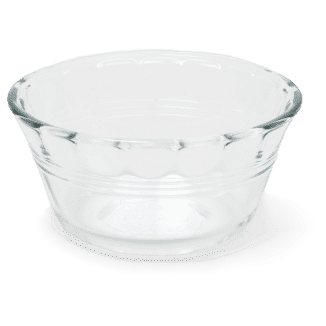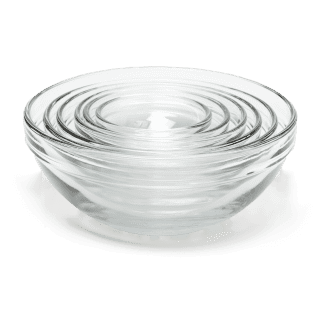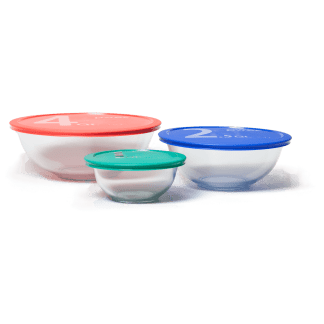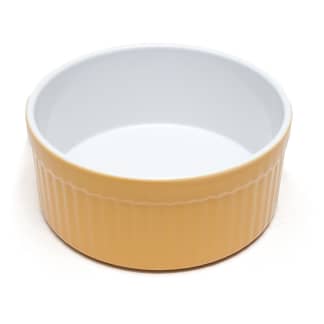Our favorite ramekin is the HIC Kitchen Souffle, 6 oz, which comes in a set of six. This classic white ramekin has straight sides that produce beautiful, easily released soufflés and crème caramels. Its durable, relatively heavy ceramic construction ensures that baked eggs always come out perfectly, with firm whites and runny yolks. And it’s the perfect size—wide enough to pour into easily but still compact enough that you can fit six of them in a baking dish for easier transport. If you’re willing to spend more, our upgrade pick is the Le Creuset Straight Wall Ramekin. It performs just as well as our main pick but comes in many pretty colors. It’s even heavier and more durable, and it’s also stackable, making for easier storage.

Though ramekins—small round baking dishes—might not seem like essential kitchen equipment, they are surprisingly versatile. They’re perfect for serving nuts, dips, small snacks, and individually portioned soups, custards, pies, and soufflés. They can even be used as a stand-in for a mini prep bowl or salt cellar. Though a straight-sided fluted white dish is still considered the standard in professional kitchens, ramekins now come in many different sizes, shapes, and materials.
For this review, we focused on ramekins advertised as having a capacity between 6 and 7 fluid ounces, as we’ve found this size to be the most useful for most tasks. As you’ll read, however, the true capacity of these models varied quite a bit.
What Material is Best for Ramekins?
There are two main types of ramekins: ceramic ramekins and glass ramekins. Glass ramekins are generally a bit cheaper, and because they’re transparent, they make it particularly easy to monitor cooking. In our testing, they performed just as well as ceramic models when it came to making recipes that bake at moderate temperatures of around 350 degrees and cooking soufflés, crème caramels, and chilled berry tarts evenly and within recipe times.
That said, we slightly prefer ceramic models. While either glass or ceramic models can be used for those lower-temperature recipes, we found that glass models struggled with recipes that require higher oven temperatures of 450 degrees or more, such as our Baked Eggs Florentine.
With this recipe, glass models overcooked the eggs, while ceramic models excelled, turning out eggs with firm whites and liquid yolks. Why? Glass conducts heat much more effectively than ceramic, and in this particular setting, that’s a disadvantage. Ceramic is a much better insulator, so the contents of a ceramic ramekin cook more slowly and gently. Ceramic also has a greater heat capacity than glass does. This means that while it’s slower to heat, ceramic retains that heat well once it has heated through and can release it evenly over time. Ceramic ramekins thus continue to release heat into their fillings once removed from the oven; in fact, we used this carryover heat to help finish cooking the eggs in our eggs Florentine recipe.
If you never plan to use your ramekins to bake eggs or perform other high-heat tasks, a glass ramekin could be fine. But for its greater versatility, we prefer ceramic.

What to Look For
- Ceramic Material: As we explained in the previous section, ceramic is generally more versatile, allowing you to cook low- and high-temperature recipes equally well.
- Thick, Heavy Construction: The thicker and heavier the ramekin, the greater its heat capacity, and the more slowly and gently it cooks food in the oven—an advantage for most of the recipes you’re likely to use a ramekin for. Thicker, heavier ceramic ramekins with a thickness of at least 0.3 inches and a weight of at least 6.4 ounces did the best job with sensitive recipes such as the baked eggs, ensuring that they were perfectly done every time. Thinner, lighter-weight ceramic models didn’t always manage to cook the egg whites all the way through.
- A True Capacity of 7 to 8 ounces: Different manufacturers use different benchmarks to measure the capacity they advertise for their ramekins, accounting for different levels of headroom after filling. To standardize, we measured and reported the capacity of each ramekin when it was filled to the brim, which we found was the most accurate way to compare how much they could hold. Surprisingly, ramekins that were a true 6 ounces struggled to hold all the filling for our recipes. Ramekins with a true capacity of 7.5 or 8 ounces, however, easily held all the fillings with enough room to spare.

- Straight Sides: While ramekins with flared or rounded sides made perfectly good crème caramels, soufflés, and tarts, we slightly preferred the look of foods turned out of ramekins with straight sides. It was also a little easier to release baked goods and desserts made in ramekins with straight sides. (We had to angle our knife in awkward ways when cutting around the edges of crème caramels and berry puddings made in rounded or flared ramekins and sometimes accidentally nicked the desserts themselves, marring their looks.) Finally, compared with ramekins with flared sides, straight-sided ramekins were easier to pick up with tongs, as we often do when they’re hot out of the oven.

- A Diameter of 3.5 to 3.7 inches: We preferred ramekins that measured about 3.5 inches across. This size was wide enough to fill easily but still compact enough that we could load six or eight into a baking dish—something we do when cooking foods that require a water bath, such as crème caramel, or transporting a bunch of ramekins in and out of the oven. Ramekins that were smaller were a little harder to fill. And while ramekins with wider openings, including those with flared sides, were easy to fill, we struggled to fit six in a baking dish.

- A Temperature Maximum of 500 Degrees: To our surprise, not all the ramekins we tested could be used at high temperatures. This isn’t necessarily a deal breaker—many recipes that use ramekins require relatively low oven temperatures of about 350 degrees. Still, we preferred ramekins that were heat-safe to higher temperatures because they’re more versatile—you can even broil or torch them for short periods, as we do when making crème brûlée, for example.
Nice to Have
- Stackable Design: We appreciated models that stacked for more compact storage, though it wasn’t an essential. While our winning ramekins don’t stack, our upgrade choice does.

The Tests
- Chill and unmold Individual Summer Berry Puddings
- Bake Chocolate Soufflés
- Bake and unmold Classic Crème Caramel
- Prepare Baked Eggs Florentine
- Form, bake, and unmold New England Pork Pies in our winning and Best Buy ramekins
How We Rated
- Performance: We rated the ramekins on how well they made different types of food.
- Ease of Use: We rated the ramekins on how easy they were to fill, release food from, and transport.
- Durability: We rated the ramekins on how well they survived testing, noting any chips, cracks, or other damage.
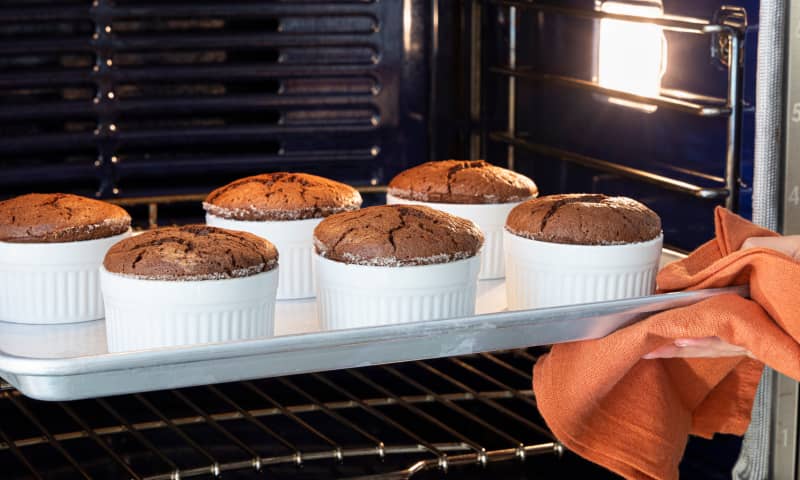






 Buy at Food52
Buy at Food52

